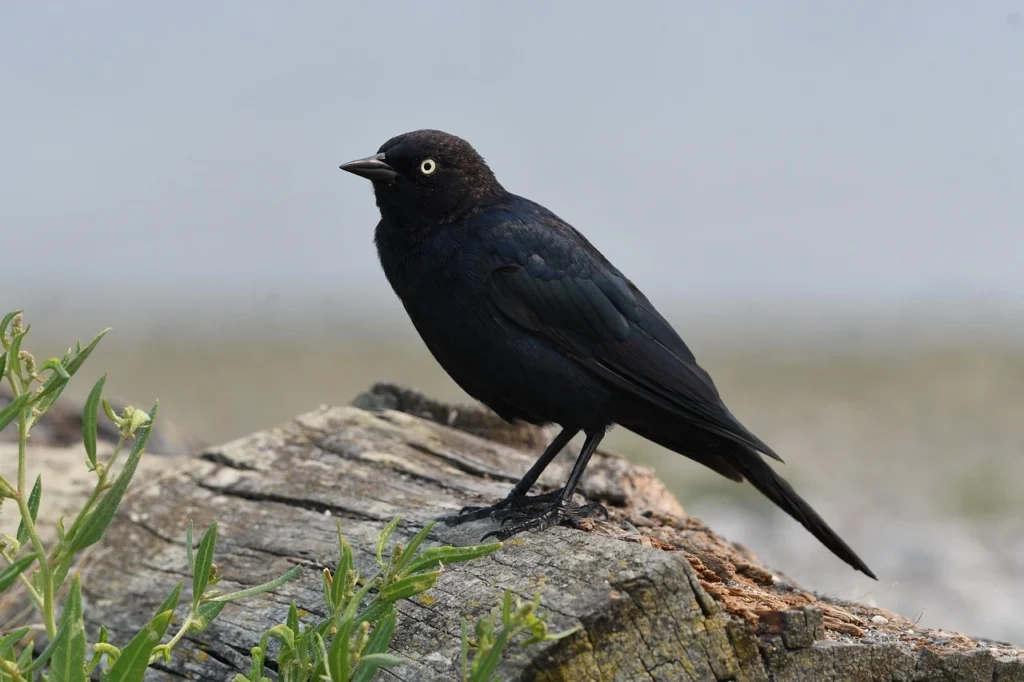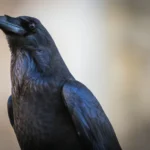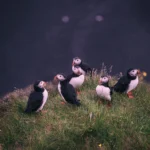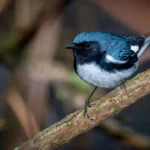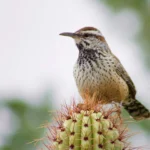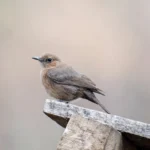South Carolina’s rich mix of wetlands, forests, and coastal plains makes it a year-round haven for birdlife, especially striking black-colored birds. Whether you’re spotting a grackle shimmering in the sun or hearing the caw of a crow across a pine woodland, these dark-feathered residents are hard to miss.
This guide explores 15 common black birds in South Carolina, ranging from sleek songbirds to majestic scavengers. While they may share a color palette, each species has its unique behaviour, habitat, and voice. Some are backyard regulars, others prefer secluded marshes or soaring skies—but all have an important role in the state’s vibrant ecosystem.
Whether you’re a backyard birder or a curious traveler, this article will help you identify and appreciate these birds through photos, field marks, and fun facts.
Black Birds in South Carolina
1. Common Grackle (Quiscalus quiscula)
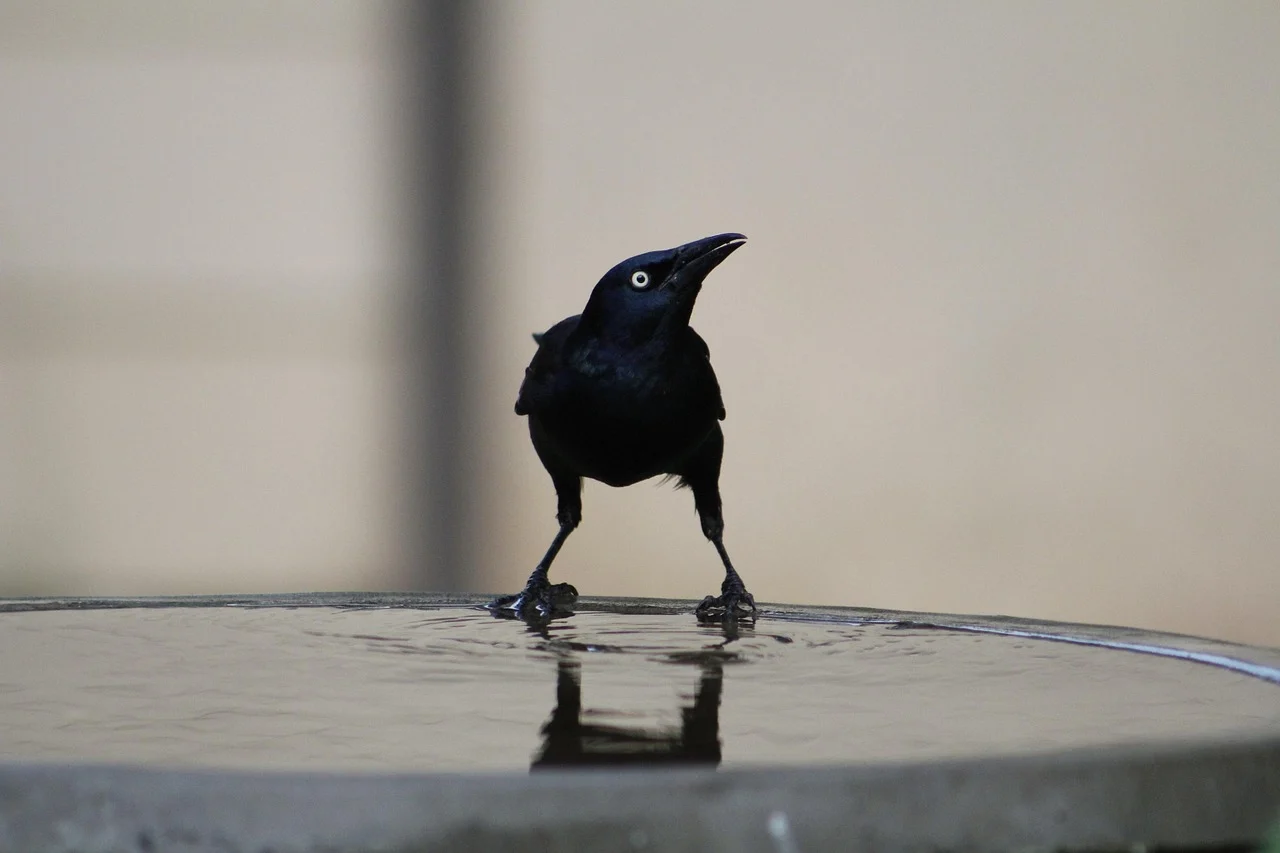
What Does the Common Grackle Look Like?
The Common Grackle is a medium-sized blackbird with an elongated body, long tail, and piercing yellow eyes. While they appear entirely black from afar, up close, males shimmer with iridescent blues, greens, and purples, especially around the head.
Also read: 14 Shorebirds of Florida and How to Identify Them
Where Can You Find Grackles in South Carolina?
Grackles are widespread across South Carolina all year long. You’ll find them in:
- Suburban neighborhoods and parks
- Farm fields and pastures
- Wetlands, lake edges, and pine woods
They thrive in human-altered environments and often travel in noisy flocks.
Also read: Bird Species That Look Like American Robins
What Do Grackles Eat?
These opportunistic omnivores eat:
- Beetles, caterpillars, and other insects
- Corn, rice, and seeds
- Berries, fruits, and garbage scraps
- Occasionally, frogs, fish, or baby birds
They often forage in groups, boldly walking across lawns or parking lots.
Behavior and Sounds
Grackles are known for their harsh, metallic calls—often described as creaky or rusty. They’re highly social and sometimes aggressive, especially in groups. Their long tails are often held in a V-shape during flight.
Nesting and Breeding
Grackles build bulky nests in trees, shrubs, or even man-made structures. They lay 3–5 eggs per clutch, and both parents may be involved in raising the young.
Fun Fact
Grackles have been seen dunking hard food (like dog kibble) in water to soften it before eating—an example of their intelligence and adaptability.
2. Red-winged Blackbird (Agelaius phoeniceus)
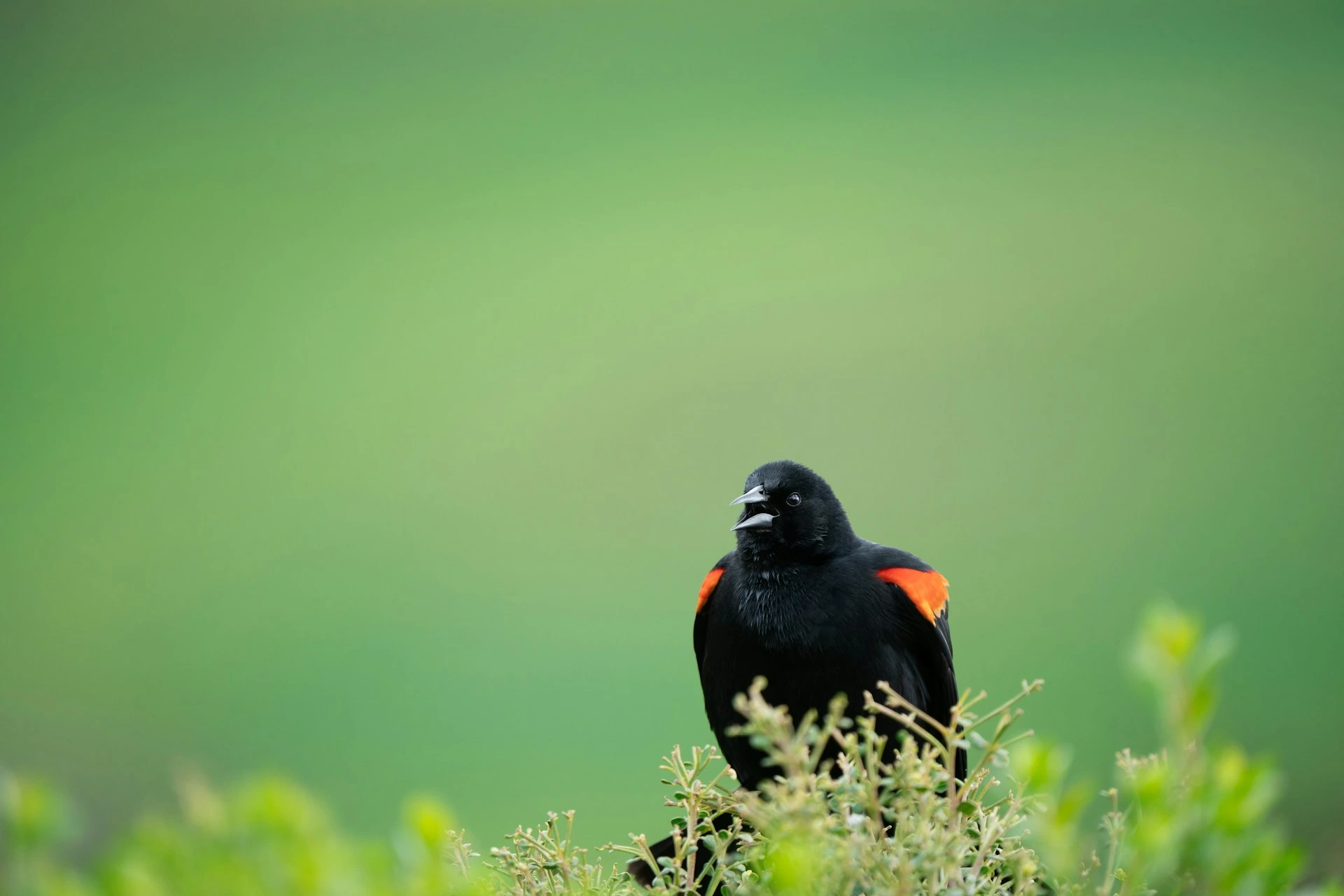
What Does the Red-winged Blackbird Look Like?
Male Red-winged Blackbirds are easy to recognize with their glossy black feathers and vivid red-and-yellow shoulder patches, called epaulets. These bright patches flare during territorial displays. Females look very different—streaky brown, with pale eyebrows, often mistaken for a sparrow.
Where Can You Find Red-winged Blackbirds in South Carolina?
These birds are common year-round in South Carolina, especially near water. You’ll spot them in:
- Freshwater marshes and ponds
- Rice fields and drainage ditches
- Grassy roadsides and wet meadows
They often perch on cattails or reeds, loudly singing to defend their space.
What Do Red-winged Blackbirds Eat?
Red-winged Blackbirds are omnivores. Their diet shifts with the seasons:
- Spring/Summer: Insects like dragonflies, beetles, and caterpillars
- Fall/Winter: Seeds from grasses, grains, and weeds
- Occasionally berries or small snails
They forage in groups and often feed on the ground or low in vegetation.
Behavior and Sounds
These birds are famously loud and territorial. Males sing a distinctive “conk-la-ree!” song to attract mates and warn rivals. During breeding season, they fiercely defend their nests—even diving at humans who get too close.
Nesting and Breeding
Females build cup-shaped nests in thick marsh grasses or shrubs near water. They lay 3–4 eggs, and the male may guard multiple nests in his territory. The young fledge about two weeks after hatching.
Fun Fact
Red-winged Blackbirds are one of the most studied and widespread birds in North America, with males known to defend up to 10 females’ nests at once!
3. European Starling (Sturnus vulgaris)
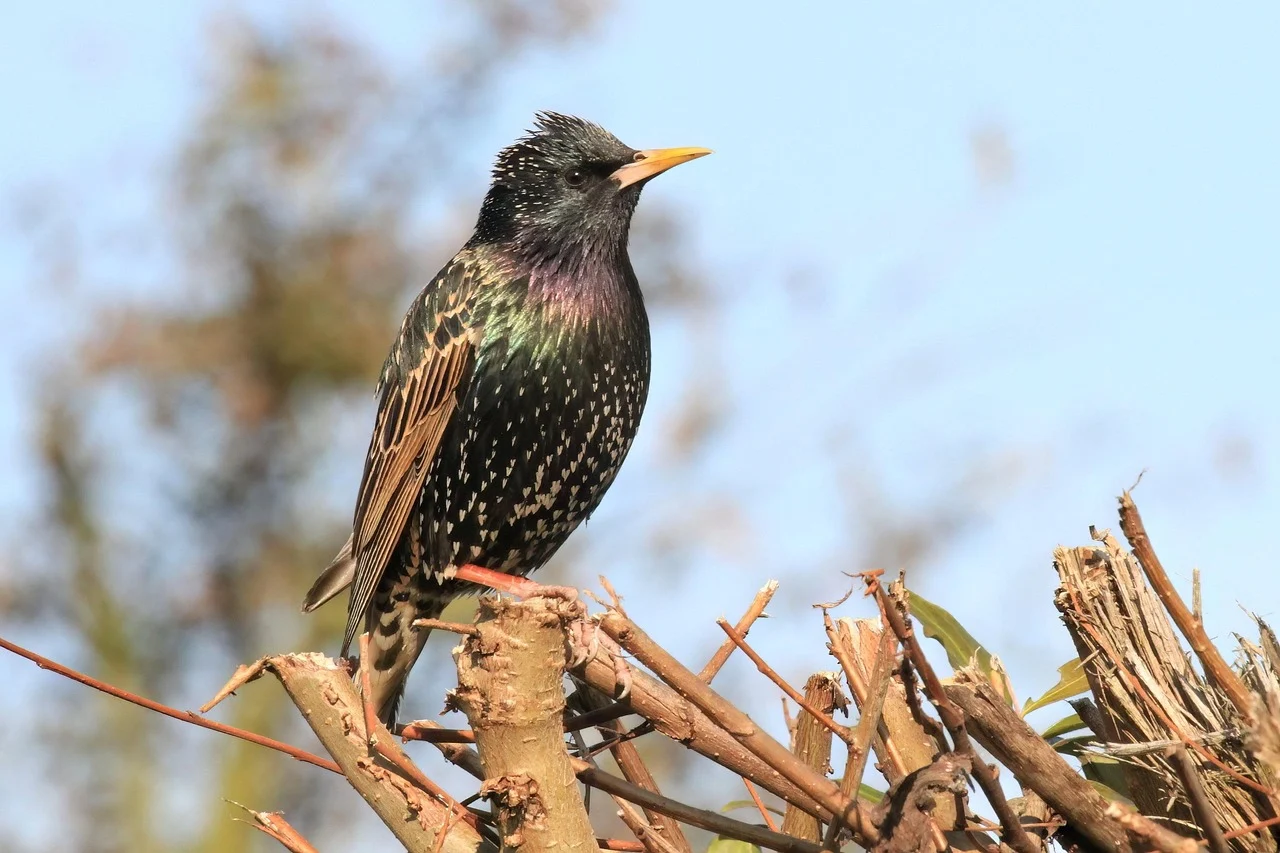
What Does the European Starling Look Like?
European Starlings appear black at first glance but shine with green and purple iridescence in good light. In winter, their plumage is spotted with white, giving them a speckled look. They have short tails, pointed yellow bills (in breeding season), and a chunky body with triangular wings.
Where Can You Find Starlings in South Carolina?
Starlings are non-native but now abundant year-round across South Carolina. They thrive in:
- Suburban lawns and cityscapes
- Farms, feedlots, and barns
- Utility lines and parking lots
They’re especially noticeable in massive winter flocks that murmurate in swirling shapes.
What Do European Starlings Eat?
These birds are omnivorous generalists. Their menu includes:
- Insects and grubs (especially in spring)
- Seeds and grains
- Fruits like mulberries and cherries
- Scraps from trash bins and urban areas
They often probe the ground with their strong bills to uncover hidden bugs.
Behavior and Sounds
Starlings are social, noisy, and competitive. They make a wide range of sounds, including clicks, whistles, and mimicked calls from other species. In flocks, they’re constantly chattering. They’re also known to aggressively take over nest sites from native birds.
Nesting and Breeding
Starlings nest in cavities—tree holes, vents, and even traffic lights. They line the cavity with grass and feathers. Females lay 4–6 pale blue eggs, and both parents help incubate and raise the young.
Fun Fact
Despite being introduced to the U.S. in the 1890s by Shakespeare fans, starlings are now one of the most numerous birds in North America, with an estimated 200+ million individuals.
4. Rusty Blackbird (Euphagus carolinus)
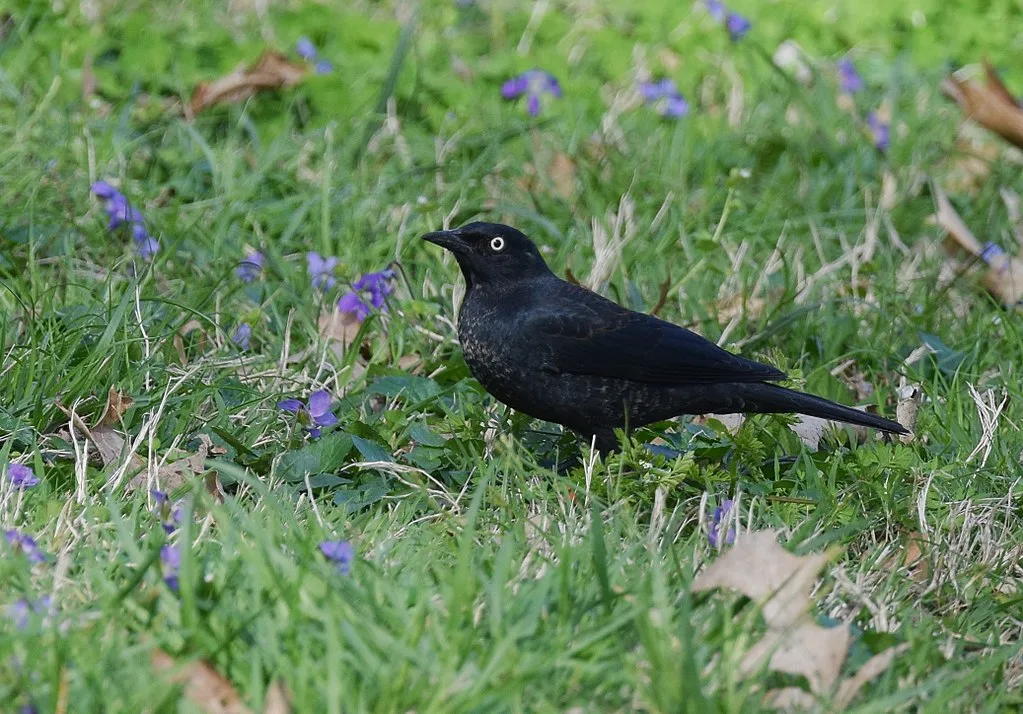
What Does the Rusty Blackbird Look Like?
In winter, Rusty Blackbirds are named for the rust-colored edges on their otherwise black feathers—giving them a “worn bronze” look. Males appear mostly glossy black in breeding season, while females are softer brown with subtle streaks. They have pale yellow eyes and slender bills.
Where Can You Find Rusty Blackbirds in South Carolina?
Rusty Blackbirds are winter migrants in South Carolina. Look for them from late fall through early spring in:
- Swamps and wooded wetlands
- Flooded bottomland forests
- Edges of slow-moving creeks and beaver ponds
They prefer quiet, forested wetlands, making them less visible than other blackbirds.
What Do Rusty Blackbirds Eat?
They forage in wet ground and shallow water, flipping over leaves and debris to find:
- Aquatic insects and beetles
- Small fish and amphibians
- Snails, crustaceans, and plant matter
Their diet is more water-based than most other blackbirds.
Behavior and Sounds
Rusty Blackbirds are quiet and cautious, often foraging alone or in small, loose groups. Their call is a distinctive, creaky “kreee” or “gurgle,” quite unlike the sharp tones of grackles or red-winged blackbirds.
Nesting and Breeding (Outside SC)
Rusty Blackbirds breed in boreal forests far to the north, nesting near standing water in spruce bogs or alder thickets. Their cup-shaped nests are built in shrubs or small trees.
Fun Fact
This species has declined by over 85% in recent decades, making it one of North America’s fastest-declining songbirds. Wetland loss and pollution are suspected causes.
5. Brewer’s Blackbird (Euphagus cyanocephalus)
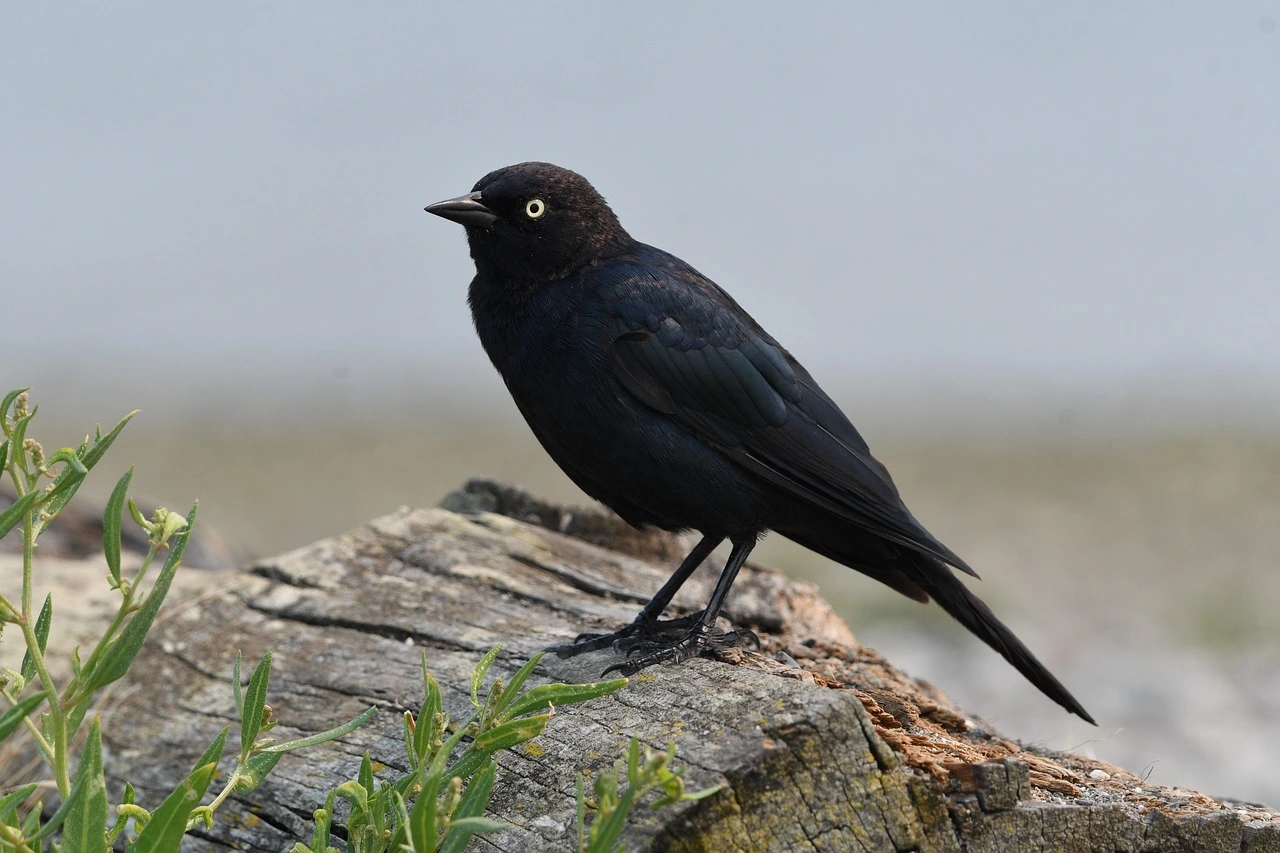
What Does the Brewer’s Blackbird Look Like?
Brewer’s Blackbirds are sleek and slender. Males are a glossy black with subtle purplish or bluish iridescence—especially on the head. Their eyes are a striking pale yellow. Females, by contrast, are uniformly brownish-gray with dark eyes, lacking the sheen of the males.
Where Can You Find Brewer’s Blackbirds in South Carolina?
This species is considered uncommon and irregular in South Carolina, typically seen during migration or in winter. When present, you may find them:
- Foraging in open fields or grassy roadsides
- Loafing near shopping centers and parking lots
- In mixed flocks with grackles or starlings
They prefer open or semi-open habitats and are often spotted near human activity.
What Do Brewer’s Blackbirds Eat?
Their diet is flexible and seasonal. They forage mostly on the ground for:
- Insects like grasshoppers, beetles, and ants
- Seeds and grains from fields or feeders
- Berries and small fruits in the fall
- Occasionally crumbs and scraps in urban areas
They often follow tractors or lawnmowers to catch exposed insects.
Behavior and Sounds
Brewer’s Blackbirds are calm and often quiet. Their song is a high-pitched, squeaky series of notes, and their calls include short clicks or harsh “chucks.” Males may display by fluffing feathers and holding their tails up.
Nesting and Breeding (Outside SC)
They breed in western and northern regions, nesting in trees, shrubs, or even on the ground. Nests are built from grasses and mud. Females lay 3–6 eggs, typically pale blue or gray with markings.
Fun Fact
Although less common in the Southeast, Brewer’s Blackbirds are among the few blackbird species that thrive in parking lots and city centers, often strolling right past pedestrians.
6. Boat-tailed Grackle (Quiscalus major)
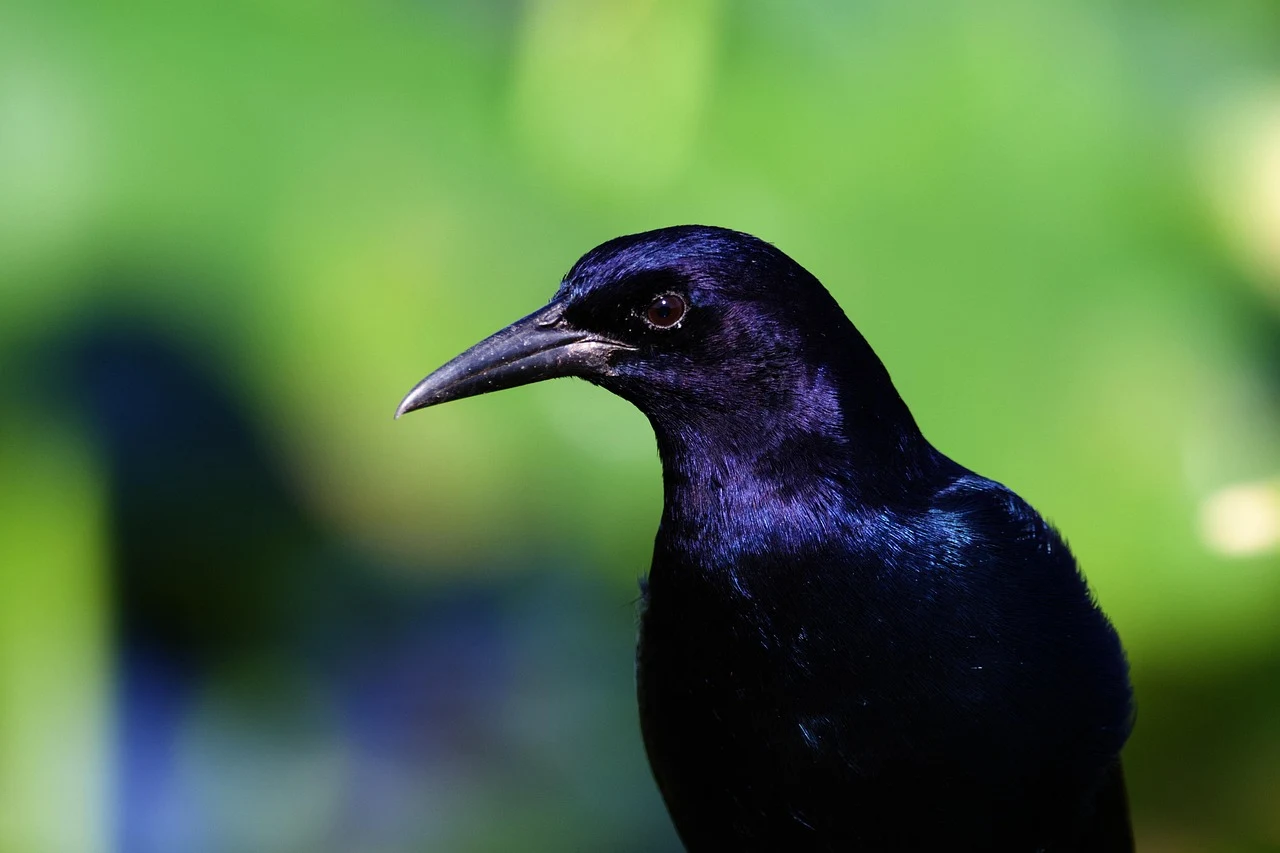
What Does the Boat-tailed Grackle Look Like?
This large, long-legged blackbird is hard to miss. Males are glossy black with a distinctly long, keel-shaped tail—like a boat’s rudder—often held in a wide V during flight. Females look entirely different: they are smaller and brown with paler underparts and a more modest tail.
Where Can You Find Boat-tailed Grackles in South Carolina?
These grackles are year-round residents along the South Carolina coast. You’ll often spot them in:
- Salt marshes and tidal flats
- Docks, harbors, and boardwalks
- Coastal shopping centers and beach parking lots
They’re common where land meets water, especially around brackish wetlands and urban beach areas.
What Do Boat-tailed Grackles Eat?
They’re omnivorous and opportunistic, known to eat:
- Crabs, insects, and small fish
- Frogs, snails, and other marsh critters
- Seeds, grains, and garbage scraps
They often wade into shallow water to grab food or boldly scavenge around picnic tables.
Behavior and Sounds
Boat-tailed Grackles are extremely vocal. Their calls are loud, bizarre, and varied, ranging from crackling sounds to wheezy whistles. Males are bold and often gather in large, noisy flocks, especially near food sources.
Nesting and Breeding
These birds nest in colonies in reeds or shrubs over water. Females build the nests and care for the young, while males compete for mating rights. Each clutch usually contains 3–5 eggs.
Fun Fact
Boat-tailed Grackles only occur in the coastal Southeast, unlike their inland cousins. Their tail is one of the longest of any North American songbird relative to body size.
7. Brown-headed Cowbird (Molothrus ater)
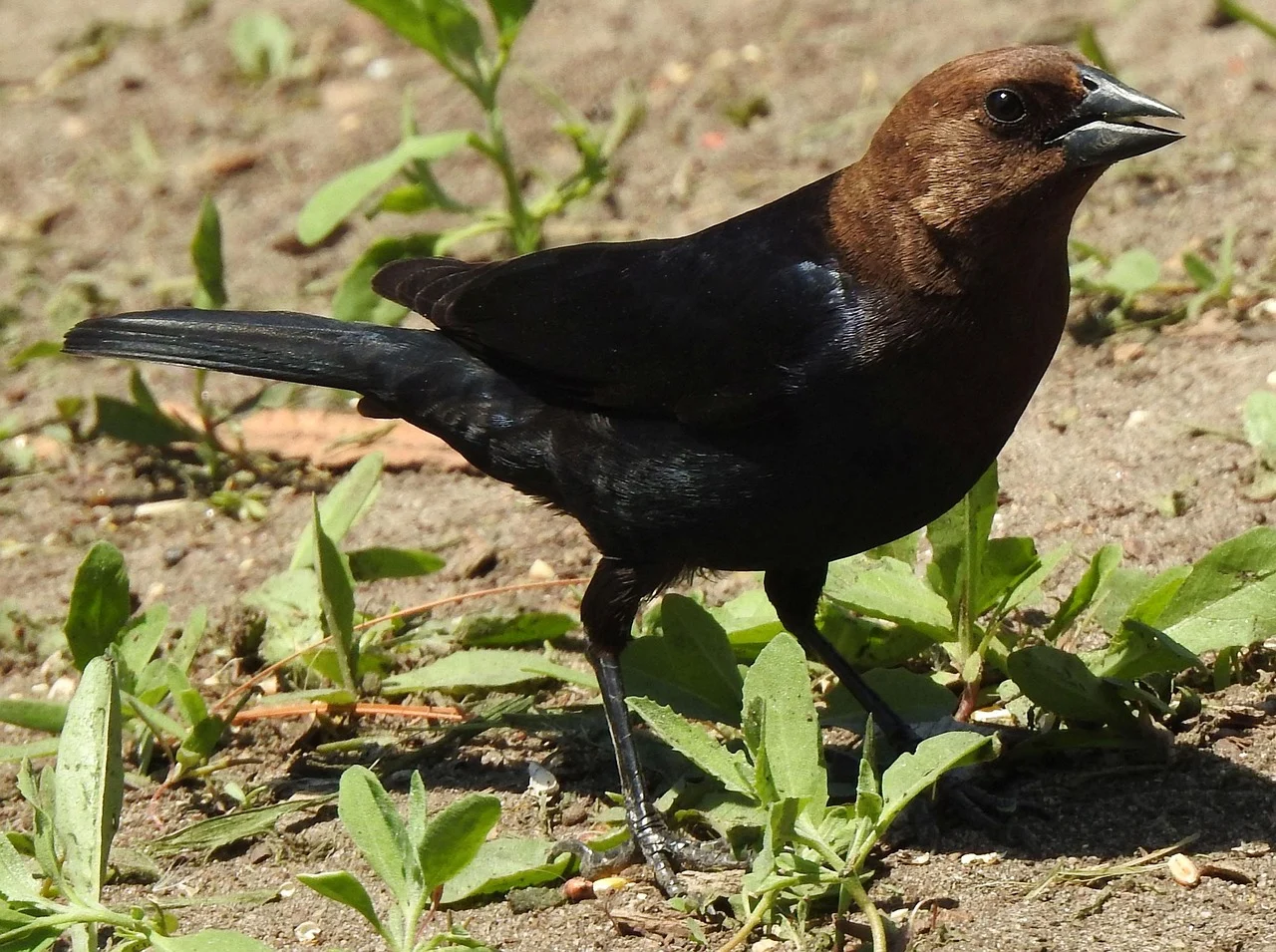
What Does the Brown-headed Cowbird Look Like?
Males are glossy black with a rich chocolate-brown head that contrasts clearly in good light. Females are plain grayish-brown overall, with subtle streaking and a stout body. Both sexes have thick, conical bills suited for seed eating.
Where Can You Find Cowbirds in South Carolina?
Brown-headed Cowbirds are common across South Carolina in open or semi-open habitats. Look for them:
- In pastures and farmland
- Along forest edges and grasslands
- Around feeders, especially with mixed blackbird flocks
They often follow grazing animals or mowing equipment to catch disturbed insects.
What Do Cowbirds Eat?
Cowbirds forage mostly on the ground for:
- Grass and weed seeds
- Beetles, caterpillars, and flies
- Grain crops and crumbs near human activity
They’re frequent visitors to backyard feeders, particularly for millet and sunflower seeds.
Behavior and Sounds
Males perform a distinctive bowing song display, accompanied by a liquid, gurgling “glug-glug-gleee”. These birds are highly social and often mix with blackbirds, grackles, and starlings.
Nesting and Breeding: Brood Parasites
Brown-headed Cowbirds are infamous for their brood parasitism—they lay eggs in other birds’ nests instead of building their own. Host birds unknowingly raise the cowbird chick, often at the expense of their own young.
Fun Fact
One female cowbird may lay up to 40 eggs in a single breeding season, scattering them across multiple host nests. Despite their shady reputation, this strategy has helped cowbirds thrive in a wide variety of habitats.
8. Common Raven (Corvus corax)

What Does the Common Raven Look Like?
Ravens are massive, all-black birds with a thick, shaggy neck, a heavy bill, and wedge-shaped tail (seen best in flight). Their wings are broad and long, often showing “fingered” wingtips when soaring. Glossy plumage gives off a purplish or bluish sheen in sunlight.
Where Can You Find Ravens in South Carolina?
Common Ravens are rare in South Carolina, mostly confined to the Appalachian foothills and highland forests in the far northwest corner of the state. Look for them:
- In remote mountain ridges or forested slopes
- Near rocky outcrops or cliffs
- Soaring over open clearings or roadways in high-elevation zones
They’re generally absent from the coastal plain and piedmont regions.
What Do Ravens Eat?
These intelligent scavengers have a varied diet, including:
- Carrion (dead animals)
- Small mammals, reptiles, and eggs
- Insects, grains, and berries
- Human leftovers or garbage in rural areas
They use their strong bills to tear meat or crack open hard food.
Behavior and Sounds
Ravens are highly intelligent and often seen soaring alone or in pairs, performing acrobatic loops or dives. Their deep, resonant “kraaawk” is lower-pitched than a crow’s. They’re capable mimics and can even imitate human voices when captive.
Nesting and Breeding
Ravens nest on cliffs, tall trees, or man-made structures like power towers. They build large stick nests, reused and added to yearly. Pairs are monogamous and stay together year-round. Clutches usually have 3–7 eggs.
Fun Fact
Ravens are among the smartest birds on Earth, known for using tools, solving puzzles, and even playing games in the wild.
9. American Crow (Corvus brachyrhynchos)
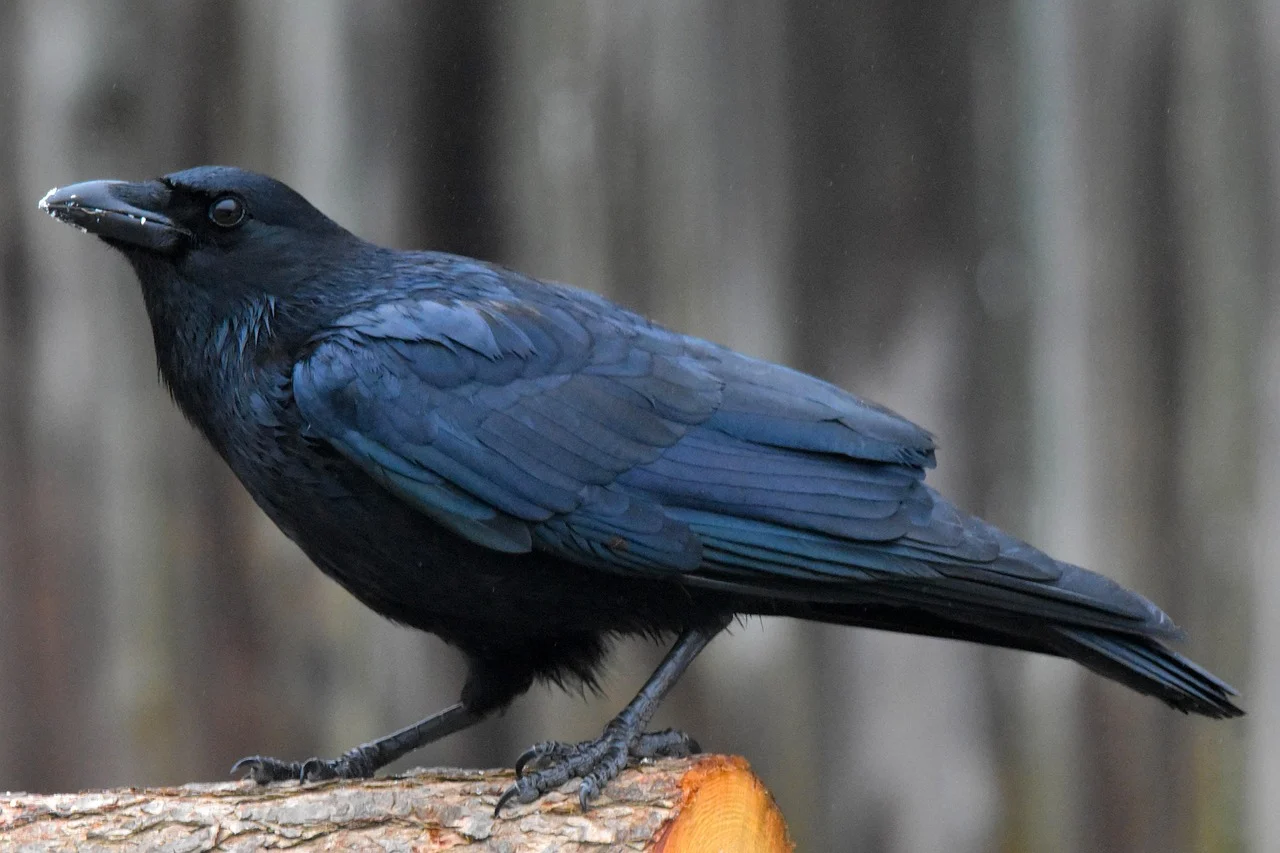
What Does the American Crow Look Like?
American Crows are medium-to-large all-black birds with a straight bill, fan-shaped tail, and a glossy sheen on their feathers. Unlike ravens, they lack shaggy neck feathers and have a more rounded tail in flight. Their wings are shorter and more paddle-like.
Where Can You Find Crows in South Carolina?
American Crows are common and widespread across all of South Carolina year-round. You’ll find them:
- In suburban neighborhoods and city parks
- Around fields, pastures, and woodlots
- Roosting in large flocks in urban or semi-urban areas
They adapt well to human presence and are often seen foraging on roadsides or lawns.
What Do Crows Eat?
Crows are opportunistic omnivores and eat just about anything:
- Insects, worms, and small animals
- Fruits, nuts, seeds, and grains
- Roadkill, garbage, and bird eggs
- Pet food left outside or scraps from picnics
They often forage in small groups and may cache food for later use.
Behavior and Sounds
Crows are intelligent and social, often gathering in large flocks outside the breeding season. Their calls are familiar—harsh “caws” and croaks that vary by mood and context. They’re excellent problem-solvers and use teamwork to exploit new food sources.
Nesting and Breeding
Crows build bulky stick nests in tall trees. The female incubates 3–7 pale blue-green eggs while the male brings food. Older siblings sometimes help raise the chicks—a trait rare among songbirds.
Fun Fact
Crows can recognize individual human faces and remember those who pose a threat or offer food—sometimes for years.
10. Great-tailed Grackle (Quiscalus mexicanus)
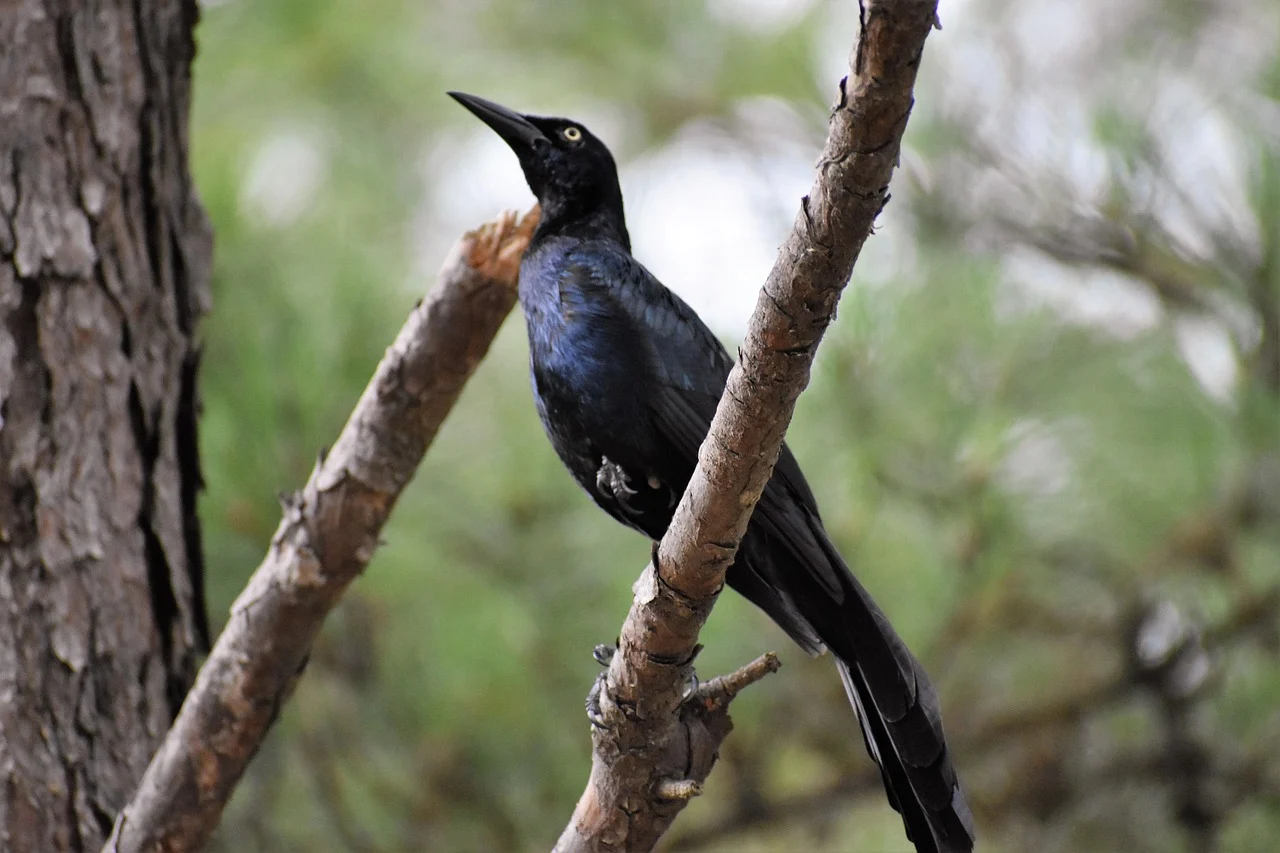
What Does the Great-tailed Grackle Look Like?
The Great-tailed Grackle is a large, lanky blackbird with glossy plumage and a striking long tail that often appears V-shaped in flight. Males are entirely iridescent black with hints of purple and blue. Females are significantly smaller with brownish bodies and darker wings and tails.
Their bright yellow eyes and upright posture make them easy to spot among other blackbirds.
Where Can You Find Great-tailed Grackles in South Carolina?
Though originally native to the western U.S. and Mexico, these grackles have expanded their range and can now be found in urban and suburban areas across South Carolina, especially:
- Parking lots and fast-food areas
- City parks and open grassy spaces
- Wetlands, agricultural fields, and marinas
They thrive around human-modified landscapes and are highly adaptable.
What Do Great-tailed Grackles Eat?
These omnivores will eat nearly anything:
- Insects, frogs, lizards
- Grains and seeds
- French fries, pet food, and trash scraps
They often forage in groups and are not shy about raiding garbage bins or picnic tables.
Behavior and Sounds
Highly social and vocal, Great-tailed Grackles are known for their loud, metallic calls and constant chatter. Males often perch high and call loudly to attract mates or assert territory.
They walk boldly on lawns, flare their tails during displays, and often bathe communally in puddles or fountains.
Nesting and Breeding
Nesting typically occurs in colonies, often in trees or reed beds. Males are polygamous and may mate with multiple females, each building her own bowl-shaped nest of grass and twigs.
Females incubate the eggs alone, raising 3–5 chicks per clutch.
Fun Fact
The Great-tailed Grackle has been called the “clown of the bird world” for its exaggerated postures, noisy calls, and antics around humans.
11 Orchard Oriole (Male – Black Morph) (Icterus spurius)

What Does the Orchard Oriole Look Like?
Adult male Orchard Orioles in their breeding plumage are strikingly dark, with a black head, back, and tail, and a rich chestnut-colored chest and belly. They are smaller and slimmer than most orioles, with a slightly curved black bill and long tail.
Females and juveniles, however, are greenish-yellow and lack the dark coloration, making the male one of the few “black bird” entries in this list.
Where Can You Find Orchard Orioles in South Carolina?
These orioles are summer breeders in South Carolina, especially in:
- Open woodlands with scattered trees
- Edges of pastures, orchards, and gardens
- Riparian areas near rivers or lakes
They arrive in late spring and typically migrate south by mid-August.
What Do Orchard Orioles Eat?
Orchard Orioles have a varied diet depending on the season:
- Insects like beetles, caterpillars, and grasshoppers
- Spiders and other small invertebrates
- Berries, nectar, and fruits like mulberries and figs
They are active foragers, hopping among branches or hovering briefly to pluck food.
Behavior and Sounds
These birds are relatively shy and quick-moving, making them harder to spot than their more vibrant oriole cousins. Males sing a warbling, fast-paced song often described as more muted than the Baltimore Oriole.
They’re often solitary or in small family groups.
Nesting and Breeding
Females weave a pendant-style nest that hangs from a tree branch, usually well-hidden. The nest is crafted from plant fibers, grasses, and even horsehair.
They typically lay 3–6 pale blue to whitish eggs, and only the female incubates, though males help defend the territory.
Fun Fact
Despite their name, Orchard Orioles are less likely to nest in actual orchards today and prefer semi-open woodland edges or riverbanks.
12. Turkey Vulture (Cathartes aura)
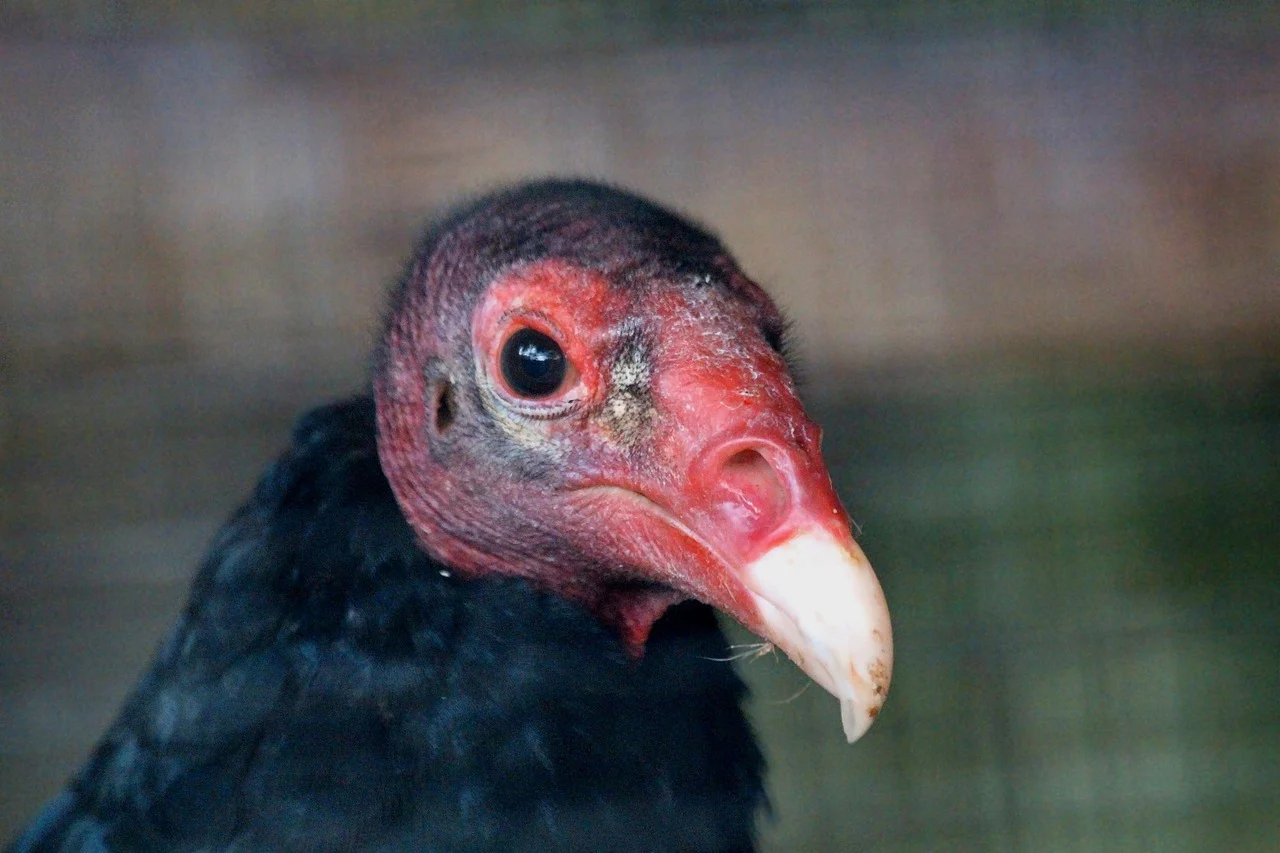
What Does the Turkey Vulture Look Like?
The Turkey Vulture is a large, dark-bodied scavenger with broad wings, long fingers at the wingtips, and a distinct two-toned wing pattern—dark in front and silvery in the back. Its most recognizable feature is the bald red head, which resembles that of a wild turkey.
Where Can You Find Turkey Vultures in South Carolina?
These vultures are common year-round throughout South Carolina and can be seen:
- Soaring over highways and open countryside
- Roosting in tall trees, barns, or abandoned buildings
- Near landfills, roadkill sites, or forest edges
They are especially active on warm, sunny days when thermals help them glide with minimal effort.
What Do Turkey Vultures Eat?
Turkey Vultures are nature’s clean-up crew, feeding almost exclusively on carrion:
- Roadkill and dead animals
- Rotting fish or livestock remains
- Sometimes scraps at dumps or in rural areas
They locate food using their keen sense of smell, which is rare among birds.
Behavior and Sounds
Turkey Vultures rarely make vocal sounds; they mostly hiss or grunt when threatened. In flight, they tilt side to side with wings held in a shallow V shape (dihedral). They are graceful gliders and can soar for hours without flapping.
Nesting and Breeding
Unlike most birds, Turkey Vultures do not build nests. They lay 1–3 eggs directly on the ground in caves, hollow logs, or abandoned structures. Chicks are fluffy white and cared for by both parents.
Fun Fact
Turkey Vultures can vomit as a defense mechanism, deterring predators with the foul smell and lightening their weight to escape quickly.
13. Black Vulture (Coragyps atratus)

What Does the Black Vulture Look Like?
The Black Vulture is a stocky, broad-winged scavenger with entirely black plumage and a short, square tail. Its most distinctive feature is the wrinkled gray-black, featherless head and pale whitish “stars” near the wingtips—visible when soaring. Compared to the Turkey Vulture, it has a shorter tail, broader wings, and a more compact appearance.
Where Can You Find Black Vultures in South Carolina?
Black Vultures are common year-round throughout South Carolina. They prefer:
- Open woodlands and rural farmland
- Landfills, highways, and urban edges
- Roosting on utility poles, cell towers, or dead trees
They often roost and soar in groups, frequently seen with Turkey Vultures.
What Do Black Vultures Eat?
Black Vultures are strict scavengers, often relying on sight or following Turkey Vultures to carcasses:
- Roadkill, dead fish, and livestock remains
- Occasionally raid unguarded nests for eggs or hatchlings
- Scavenge trash or food waste in urban areas
Unlike Turkey Vultures, they lack a strong sense of smell, so they depend on visual cues.
Behavior and Sounds
Black Vultures are highly social, roosting and feeding in large groups. In flight, they flap more frequently and glide with flat, straight wings (not a V shape like Turkey Vultures). They are mostly silent, making only hisses and grunts.
They’re more aggressive at carcasses, often driving other scavengers away.
Nesting and Breeding
Black Vultures lay 1–3 eggs directly on the ground in sheltered spots like:
- Hollow logs
- Caves or abandoned buildings
- Dense vegetation or thickets
Both parents take turns incubating and feeding the young by regurgitation. Chicks fledge after about 10 weeks.
Fun Fact
Black Vultures have been observed performing communal parenting, where multiple adults help feed and care for a single brood—an unusual behavior among scavengers.
14. Fish Crow (Corvus ossifragus)
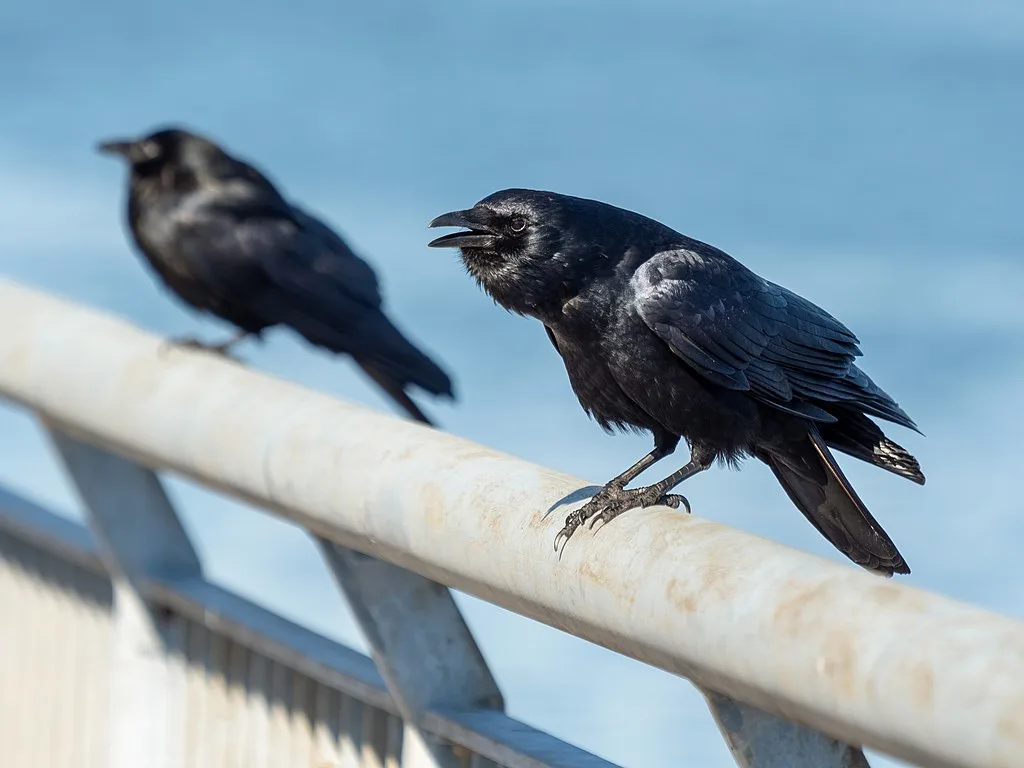
What Does the Fish Crow Look Like?
The Fish Crow is nearly identical in appearance to the American Crow, with glossy black feathers, a squared tail, and a slightly smaller, slimmer build. It has a shorter bill and often appears to have a more shaggy throat when calling.
Since visual ID is tricky, the best way to distinguish a Fish Crow is by its nasal, two-note “uh-uh” call, which is noticeably different from the American Crow’s classic “caw.”
Where Can You Find Fish Crows in South Carolina?
Fish Crows are found year-round in coastal and inland waterways throughout South Carolina. Preferred locations include:
- Salt marshes and estuaries
- Riverbanks and freshwater lakes
- Coastal towns and marina areas
- Parking lots, beaches, and garbage dumps
They are more concentrated near water, especially compared to the widespread American Crow.
What Do Fish Crows Eat?
Fish Crows are omnivorous scavengers, feeding on a wide variety of foods:
- Dead fish and small aquatic animals
- Insects, berries, and grains
- Bird eggs and nestlings
- Human food waste and roadkill
They are opportunistic and often forage in groups, especially around water sources or picnic areas.
Behavior and Sounds
The voice is the key to identifying Fish Crows. Their call is a short, hoarse “uh-uh” or “awk-awk,” compared to the American Crow’s clear “caw.”
They are highly social, often forming noisy flocks. In flight, they flap in bursts and are agile foragers—sometimes following boats or walking beaches in search of scraps.
Nesting and Breeding
Fish Crows typically nest in tall trees near water, especially pines and hardwoods. The female builds a stick nest high above ground and lays 3–5 eggs.
Both parents share feeding duties, and nestlings fledge in about 4–5 weeks.
Fun Fact
Despite their name, Fish Crows don’t exclusively eat fish—but they were first identified near coastal areas, which led to their misleading name.
15. Double-crested Cormorant (Nannopterum auritum)
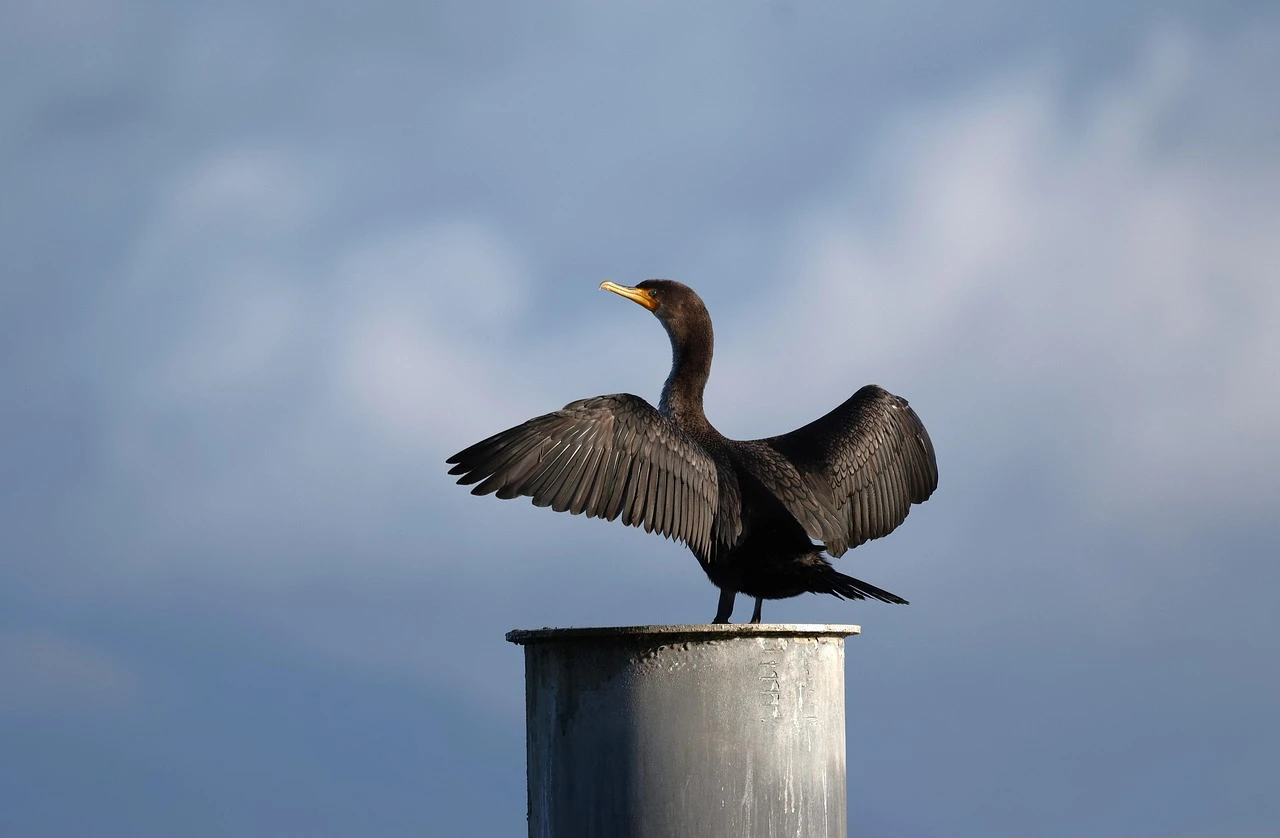
What Does the Double-crested Cormorant Look Like?
The Double-crested Cormorant is a large, long-bodied waterbird with blackish plumage, an orange-yellow hooked bill, and a long, kinked neck. In breeding season, adults develop wispy white tufts on either side of their heads—hence the name “double-crested.”
In flight, they appear slender with a snakelike neck, and they often fly in V-formations low over the water.
Where Can You Find Cormorants in South Carolina?
Double-crested Cormorants are common year-round along the South Carolina coast and inland during migration or winter. Look for them:
- Perched on docks, rocks, or snags near water
- Swimming low in lakes, rivers, and estuaries
- Nesting in colonies on coastal islands or reservoirs
They often spread their wings to dry after diving—an iconic pose due to their less water-repellent feathers.
What Do Double-crested Cormorants Eat?
These birds are expert fish hunters, diving underwater to catch their prey. Their diet includes:
- Small fish (main diet)
- Crustaceans like shrimp or crayfish
- Occasional amphibians
They dive using their strong webbed feet, swimming with agility beneath the surface.
Behavior and Sounds
Cormorants are generally quiet, except for deep grunts or croaks at nesting sites. They often roost communally and are highly visible when drying wings with outstretched poses.
Their flight is fast and direct, with rapid wingbeats. On the water, they swim low, often with just their head and neck above the surface.
Nesting and Breeding
Double-crested Cormorants nest in colonies, sometimes with other waterbirds. They build platform nests of sticks in trees, on cliffs, or even man-made structures.
They lay 3–4 eggs, and both parents help with incubation and chick-feeding. Nesting sites are often coated in guano from years of reuse.
Fun Fact
The Double-crested Cormorant’s wing-drying behavior is not just for show—it’s necessary because their feathers are less waterproof, which actually helps them dive deeper for fish.
Conclusion
From the glossy sheen of the Common Grackle to the soaring grace of the Turkey Vulture, South Carolina’s black birds offer far more than meets the eye. Their dark plumage hides a world of diversity—each species plays a unique role in local ecosystems, whether it’s cleaning up carrion, pollinating plants, or simply filling the air with birdsong.
These birds adapt to nearly every environment the state offers—from dense swamps and coastal marshes to urban backyards and open farmland. Whether you’re a seasoned birder or a beginner, paying attention to behavior, vocalizations, and habitat can help you tell them apart with ease.
By appreciating these often-overlooked feathered residents, we deepen our connection to the natural world—and help protect the habitats they rely on. So next time a shadow passes overhead or a caw rings out from the trees, look again—you might just spot one of South Carolina’s incredible black birds.

Welcome to World Birds Life, where the wonder of birds takes center stage. My name is Lexi, and I’m passionate about helping you discover the beauty and joy that birds bring into our lives.

